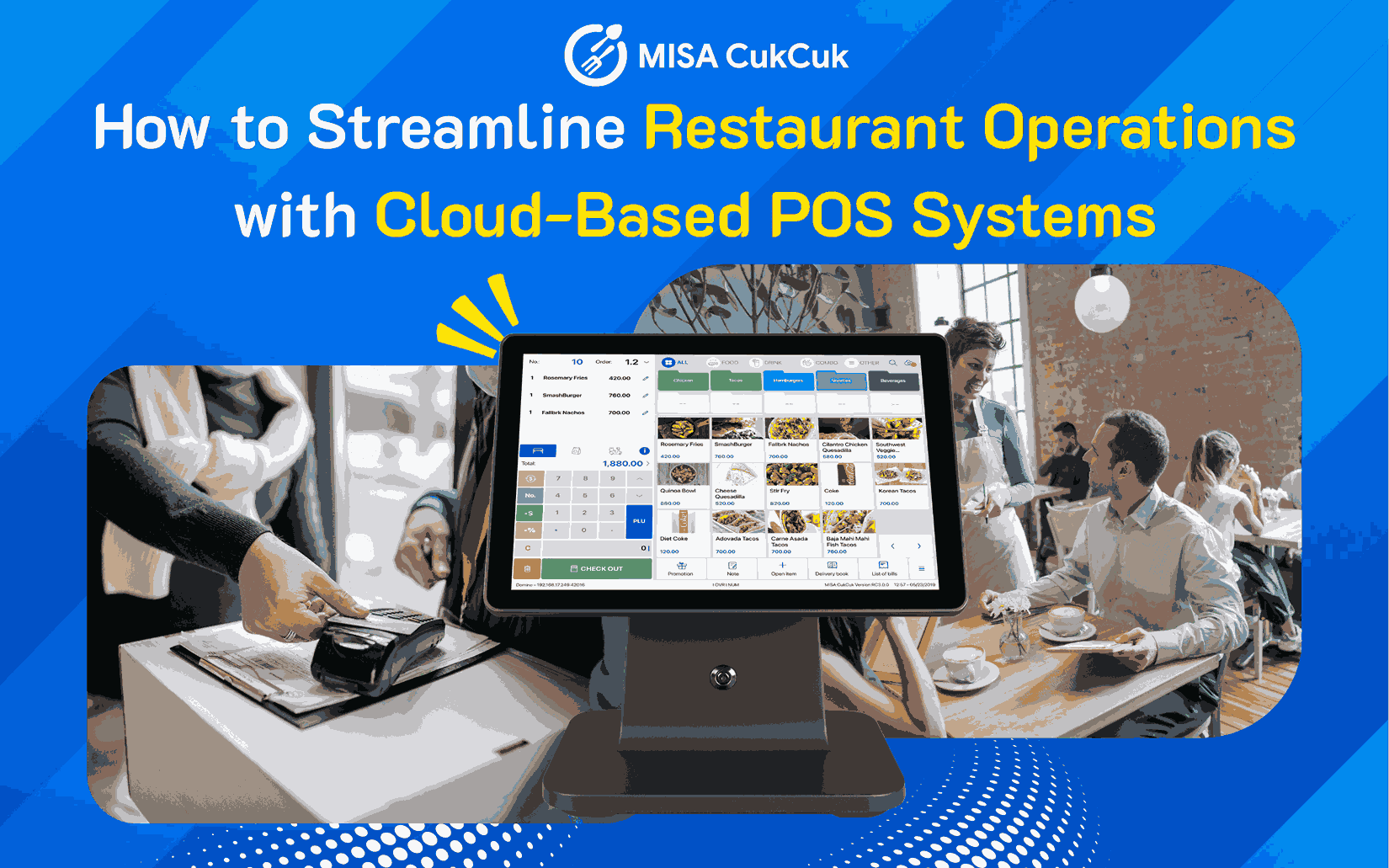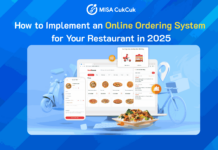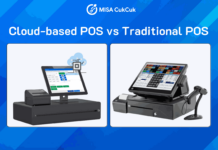
In today’s fast-paced dining industry, efficiency is the backbone of a successful restaurant. With 2025 restaurant technology trends emphasizing automation and data-driven decisions, restaurant POS systems are transforming operations. Cloud-based POS systems, in particular, offer flexibility, real-time insights, and seamless integration, helping restaurant owners streamline processes and boost profitability. This article outlines how to leverage cloud-based POS systems to optimize restaurant operations in 2025, providing actionable steps for global restaurant owners to enhance efficiency and customer satisfaction.
Why Cloud-Based POS Systems Are Essential for Restaurants
Cloud-based restaurant POS systems store data online, enabling access from anywhere, real-time updates, and integration with other tools like inventory or marketing platforms. Unlike traditional POS systems, cloud solutions are scalable, cost-effective, and easy to update, making them ideal for modern restaurants. According to restaurant technology insights, 70% of restaurants adopting cloud POS report improved operational efficiency. Key benefits include:
- Real-Time Data: Monitor sales, inventory, and staff performance instantly.
- Cost Savings: Reduce hardware costs and maintenance with cloud infrastructure.
- Scalability: Easily adapt to multiple locations or seasonal demands.
- Enhanced Customer Service: Speed up transactions and personalize experiences.
By adopting a cloud-based POS, restaurants can streamline operations and stay competitive in the global dining market.
How to Streamline Restaurant Operations with a Cloud-Based POS
Here are six practical steps to implement a cloud-based restaurant POS system and optimize key operations, with examples and benefits:
1. Centralize Order Management
A cloud-based POS consolidates orders from dine-in, takeout, and delivery into one system, reducing errors and speeding up service.
- How to Implement: Choose a POS with multi-channel integration, like those discussed in delivery operation tips. Train staff to process orders via tablets or mobile devices, ensuring real-time updates across front- and back-of-house. For example, a busy café can use a cloud POS to sync online orders with kitchen displays, cutting wait times.
- Benefits: Centralized order management minimizes mistakes, improves turnaround, and enhances customer satisfaction, driving repeat visits.
2. Optimize Inventory Tracking
Real-time inventory tracking prevents stockouts and reduces waste by syncing ingredient usage with sales data.
- How to Implement: Select a POS with inventory features, as highlighted in restaurant management resources. Set up alerts for low stock and integrate with suppliers for automated reordering. For instance, a pizzeria can track flour and cheese usage per order, forecasting needs accurately. Regularly review inventory reports to identify waste patterns.
- Benefits: Efficient inventory management cuts costs, ensures menu availability, and supports sustainable practices, appealing to eco-conscious diners.
3. Streamline Staff Scheduling and Performance
Cloud POS systems provide data on staff performance and sales trends, enabling smarter scheduling and training.
- How to Implement: Use a POS with employee management tools to track hours, tips, and sales per server. Platforms like those at cukcuk.com offer dashboards to analyze peak hours, helping you schedule staff efficiently. For example, a fine-dining restaurant can assign more servers during weekend rushes based on POS data. Conduct regular training on POS features to boost productivity.
- Benefits: Optimized scheduling reduces labor costs, improves service quality, and enhances staff morale, leading to better customer experiences.
4. Enhance Customer Experiences with Data Insights
Leverage POS data to personalize promotions and streamline transactions, creating memorable dining experiences.
- How to Implement: Use customer data from your POS to offer tailored loyalty rewards or birthday discounts. Resources like restaurant technology guides suggest integrating POS with CRM tools for personalization. For example, a bistro can send targeted email offers to frequent diners based on past orders, tracked via the POS. Ensure quick checkouts with mobile payment options.
- Benefits: Personalized experiences increase customer loyalty, while faster transactions reduce wait times, boosting satisfaction.
5. Simplify Multi-Location Management
For restaurants with multiple outlets, cloud POS systems provide centralized control over menus, pricing, and performance metrics.
- How to Implement: Choose a POS with multi-location support, as noted in franchise operation strategies. Sync menus and promotions across locations via the cloud, and monitor sales from a single dashboard. For instance, a chain of burger joints can roll out a new menu item simultaneously, tracking its performance in real time. Regular audits ensure consistency across sites.
- Benefits: Centralized management saves time, ensures brand consistency, and supports scalable growth in competitive markets.
6. Monitor and Analyze Performance in Real Time
Cloud POS systems offer real-time analytics to track sales, customer trends, and operational efficiency, empowering data-driven decisions.
- How to Implement: Set up custom reports in your POS to monitor key metrics like top-selling items or peak hours. Use insights to adjust operations, such as promoting high-margin dishes. Platforms in affordable POS plans provide robust analytics for small to large restaurants. For example, a sushi bar can analyze slow periods to launch happy hour promotions, boosting traffic.
- Benefits: Real-time data enables proactive adjustments, optimizes profitability, and keeps your restaurant agile in a dynamic market.
Tips for Choosing and Implementing a Cloud-Based POS System
To maximize the impact of your restaurant POS system in 2025, follow these tips:
- Assess Your Needs: Identify must-have features (e.g., inventory, multi-location support) based on your restaurant’s size and operations.
- Prioritize User-Friendliness: Choose a POS with an intuitive interface to minimize staff training time.
- Ensure Integration: Select a system that connects with existing tools like accounting or marketing platforms.
- Test Scalability: Opt for a POS that grows with your business, supporting additional locations or features.
- Focus on Support: Pick a provider with 24/7 customer support, as recommended in restaurant efficiency blogs.
- Start Small: Pilot the POS in one area (e.g., order management) before full rollout to address issues early.
- Train Thoroughly: Conduct regular staff training to ensure confidence in using POS features, enhancing efficiency.
For more guidance, explore restaurant technology strategies to complement your POS adoption.
Why Invest in a Cloud-Based POS in 2025?
Cloud-based restaurant POS systems are more than just transaction tools—they’re operational game-changers. They streamline order management, inventory, staff coordination, and customer engagement, all while providing real-time insights to drive profitability. In 2025, with rising costs and customer expectations, these systems are critical for staying competitive. Platforms like cukcuk.com offer scalable, user-friendly POS solutions to help restaurant owners optimize operations without breaking the bank.
Streamline Your Restaurant Operations Today
A cloud-based restaurant POS system can transform your operations, saving time, reducing costs, and delighting customers in the global dining market. By following these steps and leveraging smart technology, you can position your restaurant for success in 2025.
Ready to revolutionize your operations? Explore cukcuk.com for cloud-based POS solutions and request a demo or trial to get started today!











